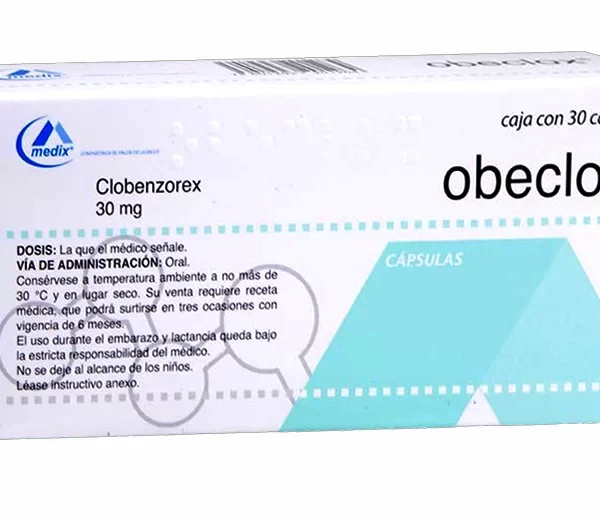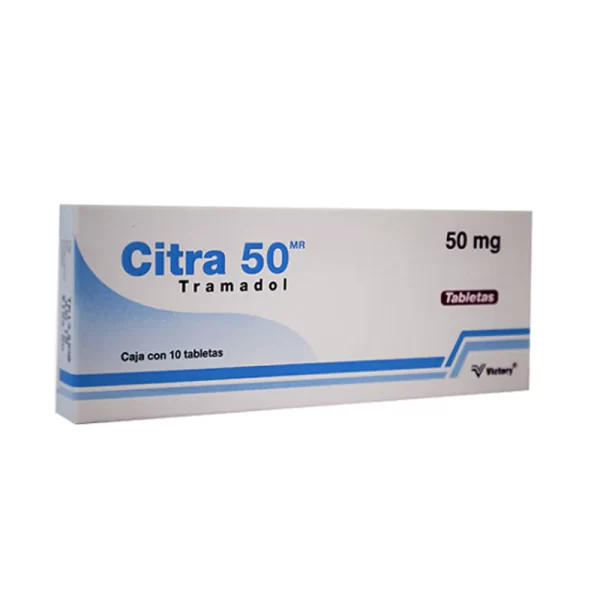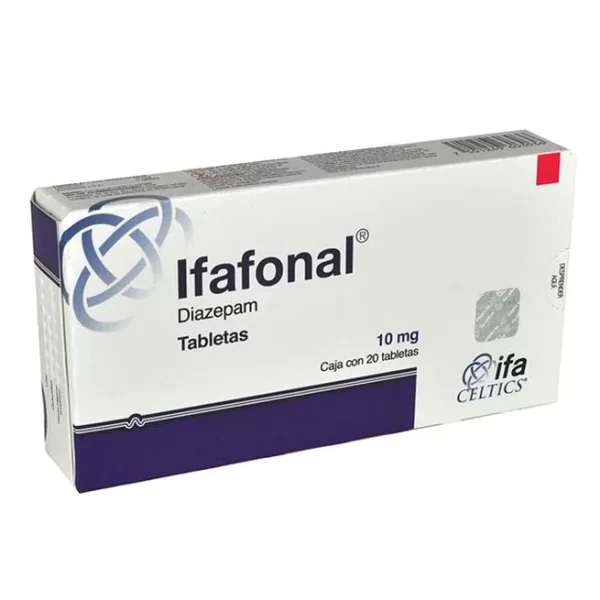Description
Cyclobenzaprine: instruction
Cyclobenzaprine is a centrally acting myorelaxant, pharmacologically related to tricyclic antidepressants; it reduces tonic somatic motor activity by acting on both alpha- and gamma-motor neurons.
Cyclobenzaprine hydrochloride is indicated for the treatment of muscle spasms associated with acute pain and musculoskeletal origin, such as low back pain, torticollis, fibromyalgia, scapulo-shoulder periarthritis. The drug can be used as an adjunct to physical therapy, to relieve symptoms.
If this product does not meet your needs or interests, you may want to look at Lertus CD Diclofenac sodium and Codeine 50/50 mg 20 Tabs. Please visit this link for further information on our Pain medicine.
How long does it take for Cyclobenzaprine 10 mg to take effect?
After taking Cyclobenzaprine 10 mg tablets, many patients notice the effect in 30 minutes, the maximum effect can be felt in 1-1.5 hours after taking the drug. Long-acting Cyclobenzaprine capsules begin to work a little later, but the effect lasts longer for up to 24 hours.
Cyclobenzaprine: pregnancy
No severe birth defects, miscarriages, or adverse effects on the mother or fetus have been detected while taking the drug.
It is important to remember that during pregnancy, only your doctor decides whether to take this medication. Cyclobenzaprine during pregnancy is prescribed only if absolutely necessary.
How do muscle relaxants work?
Under the action of myorelaxants, skeletal muscles are blocked and relaxed by blocking the H-cholinoreceptors in the synapses, which stops the nerve impulse to the skeletal musculature. This is how the segmented muscle groups are relaxed.
With the help of modern myorelaxants it is possible to effectively remove muscle spasm of various etiologies, including diseases of the spine. Myorelaxants are used in neurological practice:
- Relax the muscles in the lumbar and cervical spine in the presence of hernia and osteochondrosis.
- Relax the muscles of the peripheral skeleton if the patient is tormented by painful spasms.
- Calm the nervous system if there is excessive tension.
- Pain relief for the muscles of the neck and lower back in combination with NSAIDs (myorelaxants potentiate the effect of pain medications).
Myorelaxants are used for osteochondrosis of any localization only when hypertonicity of muscles is detected, provoking them to severe pain. By relaxing the skeletal muscles, blood circulation and microcirculation improve, and metabolism accelerates. Myorelaxants are not used if the patient has no spasmodic muscle fibers.
Contraindications to use
Do not take Cyclobenzaprine if you have:
- Allergic to Cyclobenzaprine or any other components of the drug.
- If you are taking medicines from the group of monoamine oxidase inhibitors (medicines for treatment of depression and mental illness) or finished taking them 14 days ago.
- During the recovery period after an acute myocardial infarction.
- If cardiac rhythm and conduction abnormalities, including blockades of the cardiac conduction system, have been diagnosed.
- Congestive heart failure.
- Hyperthyroidism.
- Children under 18 years of age.
- During pregnancy and during breastfeeding.
Cyclobenzaprine should be used for a short period (up to 2-3 weeks) because the muscle spasm associated with acute musculoskeletal pain is short-lived, and specific therapy for a long period is rarely justified.
Possible side effects
The most common side effects that may occur with treatment with Cyclobenzaprine Hydrochloride are drowsiness, excessive fatigue, dizziness, dry mouth, headache, abdominal pain, nausea, and constipation. Signs of an allergic reaction may also occur hives; difficulty breathing; swelling of the face, lips, tongue, or throat.
Dose of Cyclobenzaprine for Sleep
Severe muscle hypertonicity causes severe pain, which causes strong sympathetic nerve activity and subsequent sleep disturbance.
It is important to remember that Cyclobenzaprine is not a sleeping aid.
Cyclobenzaprine is a muscle relaxant that has a direct effect on sleep induction and promotes muscle relaxation, which promotes good sleep.
It is prescribed for adults – 5-10 mg one time a day. It is important, to take the drug at night before going to bed, as the patient may experience drowsiness during the day.
You should not take more than 6 capsules a day (60 mg per day); follow your doctor’s recommendations.
Do myorelaxants lower blood pressure?
Among the side effects of muscle relaxants is a decrease in blood pressure. However, tachycardia (rapid heart rate) may occur.
Check your blood pressure twice a day (morning, and evening). Take measurements after you have rested. If symptoms persist for several days, see your doctor, who will cancel or lower the dose of the drug.
Is Cyclobenzaprine the same as Xanax?
Cyclobenzaprine and Xanax (Alprazolam) are used to relieve muscle spasm. The two drugs belong to different pharmaceutical groups and contain different active ingredients.
|
Name |
Cyclobenzaprine |
Xanax |
|
Pharmacological group |
Myotropic antispasmodics |
Anxiolytics |
|
Indication |
Relief of muscular spasm accompanied by acute musculoskeletal pain as an adjunct to a regimen of restricted physical activity and exercise therapy. Improvement is manifested by the elimination of muscle spasms and associated signs and symptoms, namely pain, hypersensitivity and restricted movement. |
Anxiety and neurosis with feelings of anxiety, tension, restlessness, irritability, sleep disturbances, somatic disorders, mixed anxiety-depressive and neurotic reactive-depressive states accompanied by a decrease in mood, loss of interest in others, psychomotor agitation, sleep disturbances, decreased appetite. |
|
Side Effects |
Tachycardia, arrhythmia, decreased BP, nausea, vomiting, allergic reactions, sleep disorders. |
Headache, drowsiness, tremor, liver disorders, allergic reactions. |
|
Half-life |
32 hours |
12-15 hours |
Keep in mind that both drugs are controlled, there are contraindications in the instructions.
If you’re looking for Cyclobenzaprine over the counter, our pharmacy offers to buy the drug with a prescription from our doctor.
Cyclobenzaprine for headaches
Cyclobenzaprine can help if the cause of the pain is muscle spasm. For example, in cervical osteochondrosis, there is a constriction of the vertebral artery that supplies blood to the brain. As a result, the brain does not get enough oxygen. The person experiences dizziness, weakness, and headache.
Cyclobenzaprine blocks nerve impulses to muscle fibers. It takes the muscles from hypertensive to normal tone, thereby eliminating the spasm and pain of the headache.
Interaction with other drugs
It is necessary to inform the attending physician about the current or recent intake of drugs, which include:
- tricyclic antidepressants;
- monoamine oxidase inhibitors;
- ethanol;
- barbiturates and other drugs which depress the central nervous system;
- Tramadol;
- Guanethidine and similarly acting compounds.
Serotonin syndrome may occur during concomitant use of Cyclobenzaprine and other drugs, such as selective serotonin reuptake inhibitors, tricyclic antidepressants, Tramadol, Bupropion, Meperidine, Verapamil, or monoamine oxidase inhibitors.
Do myorelaxants cause drowsiness?
Myorelaxants act on the central nervous system (in the brain) and on the peripheral (in the spinal cord). In the two parts of the nervous system, myorelaxants block nerve impulses that increase muscle tone. As a result, increased muscle tone is reduced and painful muscle spasms are reduced. Due to the blocking of nerve signals, the main side effect is drowsiness.



















Reviews
There are no reviews yet.